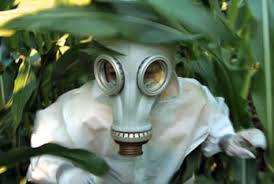Can sweating remove toxins from the body? A look at the research
11/14/2019 / By Grace Olson

Since the 1990s, scientists have determined that harmful toxins from the environment accumulate within the tissues of the body. Now, researchers from the University of Alberta in Canada found that sweating helps remove these toxins, specifically a flame retardant chemical called polybrominated diphenyl ethers (PBDEs). Published in Biomedical Research International, the researchers highlighted that studying sweat, along with blood, is crucial to understanding the toxic compound.
What are PBDEs?
PBDEs are found everywhere – they are in plastics, textiles, electronic materials, and construction materials. In the 1960s, manufacturers used them on their products in order to prevent these materials from catching fire. While this seemed advantageous at the time, people found out later that the risks of PBDEs outweighed any manufacturing benefits.
In 1987, researchers from Sweden identified them as global pollutants. In 1990, scientists found that these compounds had the ability to bioaccumulate, which means they can build up in human tissues.
Further research on PBDEs showed that the toxic compound had numerous health risks, including hormone dysregulation, neurotoxicity, and even cancer. Moreover, they were found in higher quantities among infants and toddlers than in adults. This was due to higher amounts of exposure. (Related: Scientists discover toxins from flooring and furniture in children’s blood, urine.)
PBDEs can enter the body in different ways, including:
- Indoor air and dust (from household products)
- Diet (particularly from meat)
- Breast milk (thereby transferring to the infant)
Blood and sweat, important biomarkers for studying PBDE
For the longest time, scientists have focused on blood samples when studying PBDE bioaccumulation. In the Alberta study, the researchers explored other bodily liquids and identified other possible methods to detoxify the body of these pollutants.

The researchers focused on three bodily fluids: blood, urine, and sweat. They gathered data from nine men and 11 women, who voluntarily gave samples. Each participant gave a 200 mL sample of blood, a sample of first-morning urine, and a 100 mL sample of sweat.
Researchers did not find PBDE compounds (congeners) in the urine samples, so they focused on the blood and sweat samples instead. Their findings revealed that perspiration contained higher concentrations of PBDE congeners compared to blood.
This had two serious implications:
1. Both blood and sweat can be analyzed to study PBDE exposure.
The researchers pointed out that relying on blood samples alone offered a partial understanding of how PBDEs affect the human body. They noted that sweat had not been considered for a long time because it was difficult to collect. However, their findings made it clear that examining perspiration could offer new insight into this subject.
Researchers also stressed that it was important to analyze both bodily fluids. While sweat contained higher amounts of PBDEs, it was still mostly comprised of water. This meant that PBDE amounts were diluted. Thus, any data gathered from sweat samples had to be examined alongside information gathered from blood samples.
2. By perspiring, the body rids itself of toxins.
Perspiration is primarily linked to helping regulate body temperature. However, this study showed that it has detoxification properties as well. It further highlighted the importance of sweating.
Researchers suggested that participating in activities that induce sweating could help slowly break down the build-up of PBDEs in the human body. Some of these activities include:
- Exercise. Physical activity induces heavy sweating. Due to busy schedules, it can be difficult to set aside time for regular sessions. However, putting the effort into exercise reaps a lot of benefits in the long run.
- Sauna. The heat in a sauna helps people sweat. Moreover, it does not require much movement and encourages relaxation. Do not stay inside for too long, or it may result in dehydration.
- Eating ginger. The rhizome is known to have diaphoretic (sweat-inducing) qualities. Eating ginger may potentially increase the amount of perspiration released by a person.
PBDEs have been accumulating inside human bodies for years, and children are most vulnerable. However, the body has ways of detoxifying itself, particularly sweating, which can help remove them from the body.
Check out Detox.news for more natural ways of getting rid of toxins from the body.
Sources include:
Submit a correction >>
Tagged Under:
This article may contain statements that reflect the opinion of the author





















